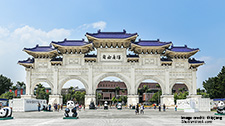Taiwan’s Southbound Drive towards Southeast Asia

Bo-jiun Jing
This article examines Taiwan’s foreign policy towards Southeast Asia during Ma Ying-jeou’s two-term (2008–2016) and Tsai Ing-wen’s first-term (2016–2020) presidencies. It discusses the context of East Asian regionalization and regionalism, and Ma’s and Tsai’s primary objectives for their strategies in relation to the ASEAN region. With a focus on their trade, investment, tourism, and higher education policies towards the region, this article evaluates how successful their policies have been in achieving the goals in the relevant areas.
This article authored by Bo-jiun Jing is published in East Asia Policy (World Scientific).
Related Publications
-
The Political Split at the Heart of Taiwan’s Struggle against Foreign Disinformation
Taiwan’s struggle against foreign disinformation and concerns about China’s impact on its 2024 election has received much international attention recently. This issue brief examines the domestic and international politics behind […]
-
ISDP Annual Report 2023
ISDP’s Annual Report for the year 2023. We look back on 2023, a year in which tensions and conflicts captured the strategic space in ISDP’s focus areas, making headlines around […]
-
Contemporary Hong Kong-Taiwan Relations in China’s Shadow
On November 25, 2022, the Institute for Security and Development Policy (ISDP) arranged a webinar titled “Contemporary Hong Kong-Taiwan Relations in the Shadow of the People’s Republic of China”. The […]
-
Taiwan and the Diplomatic Squeeze
In mid-March 2023, the self-governing island of Taiwan lost another one of its already few diplomatic allies. Announcing the severing of diplomatic ties between Taiwan and Honduras on Twitter on March 15, […]
-
ASEAN’s Evolving Alignment Strategy in the South China Sea: Between Middle and Major Power Dynamics
ASEAN is a region of vital strategic importance where the United States’ Indo-Pacific strategy and China’s Belt and Road Initiative (BRI) collide. To avert geopolitical uncertainty and to avoid being […]




